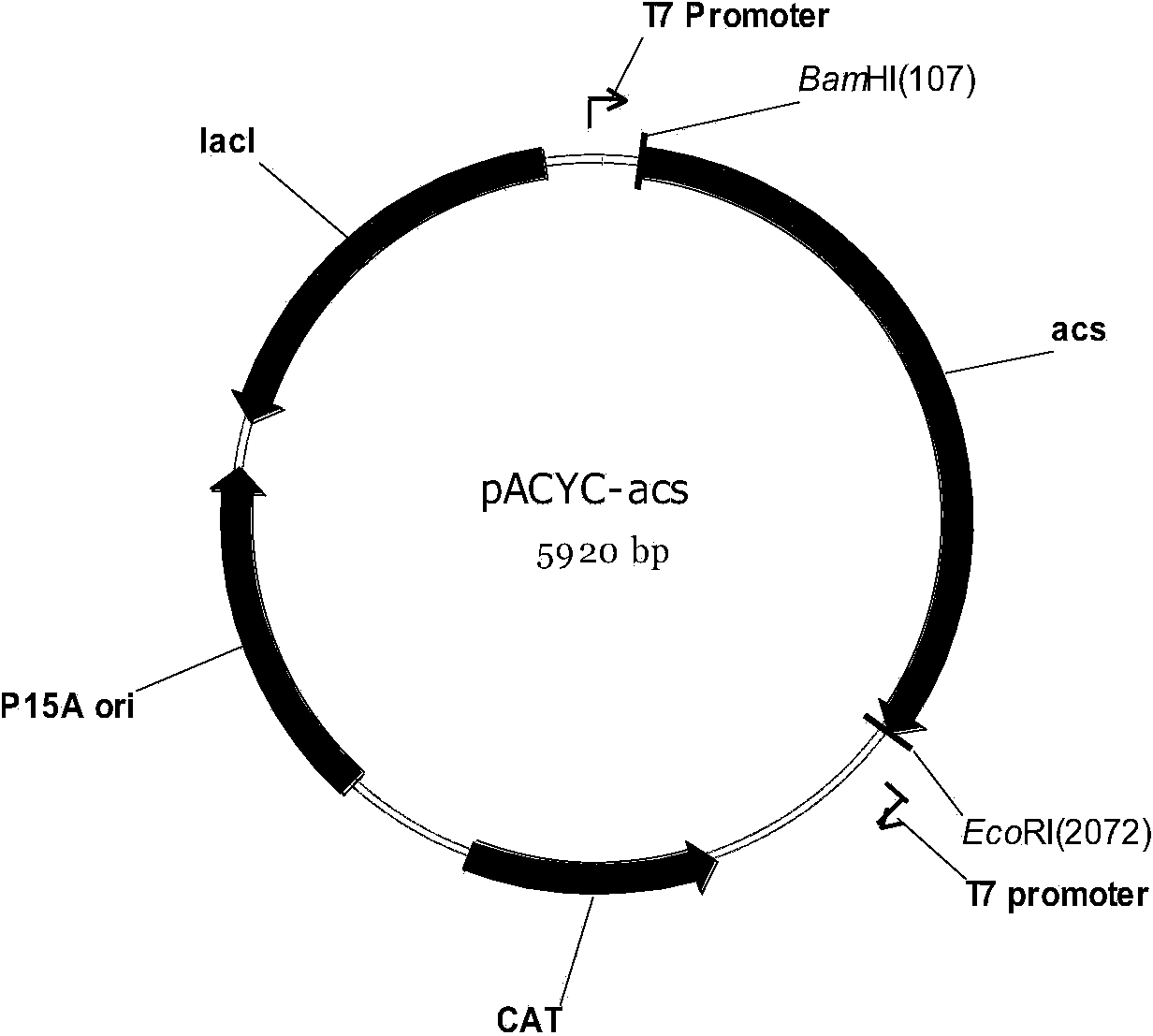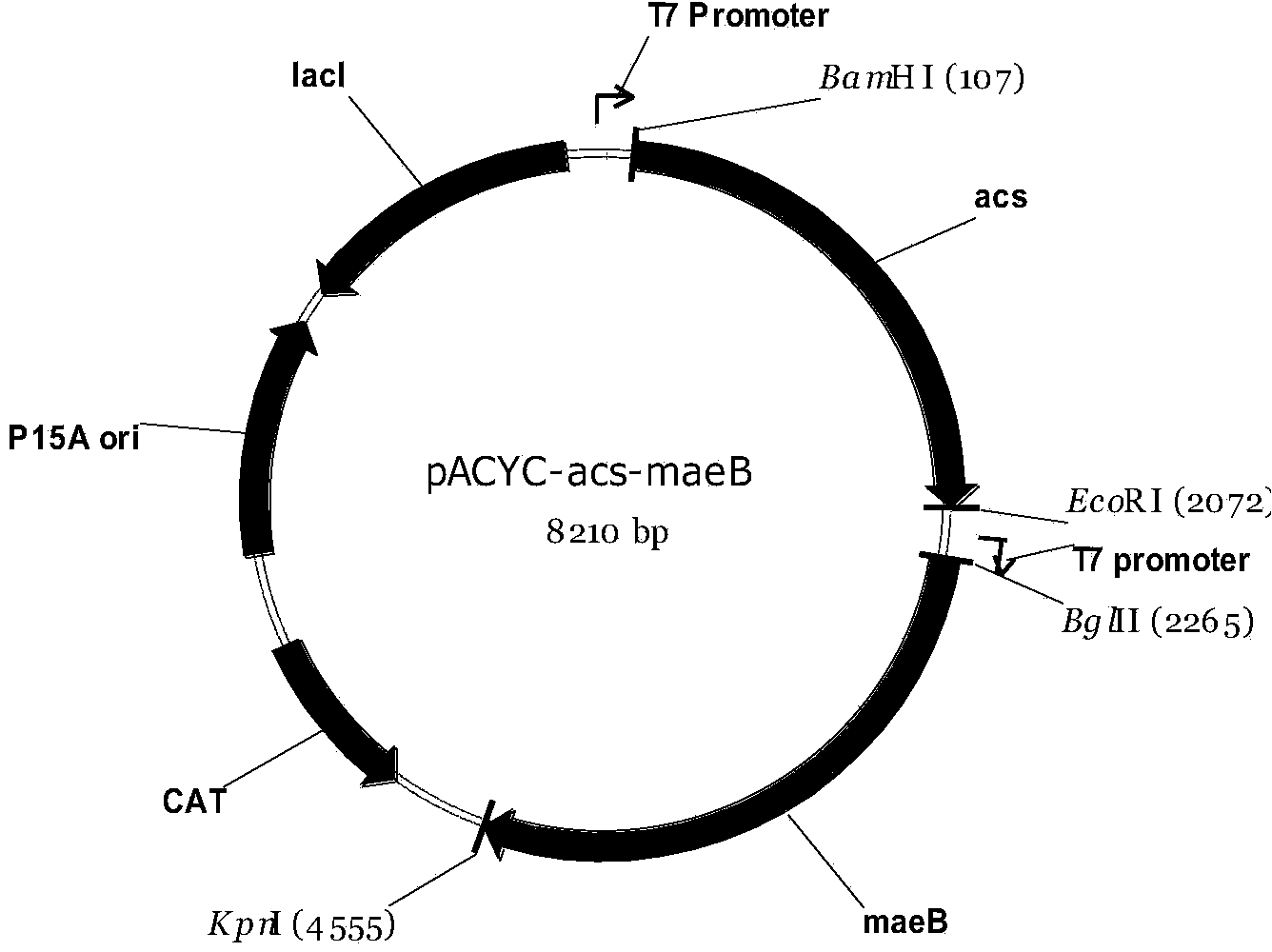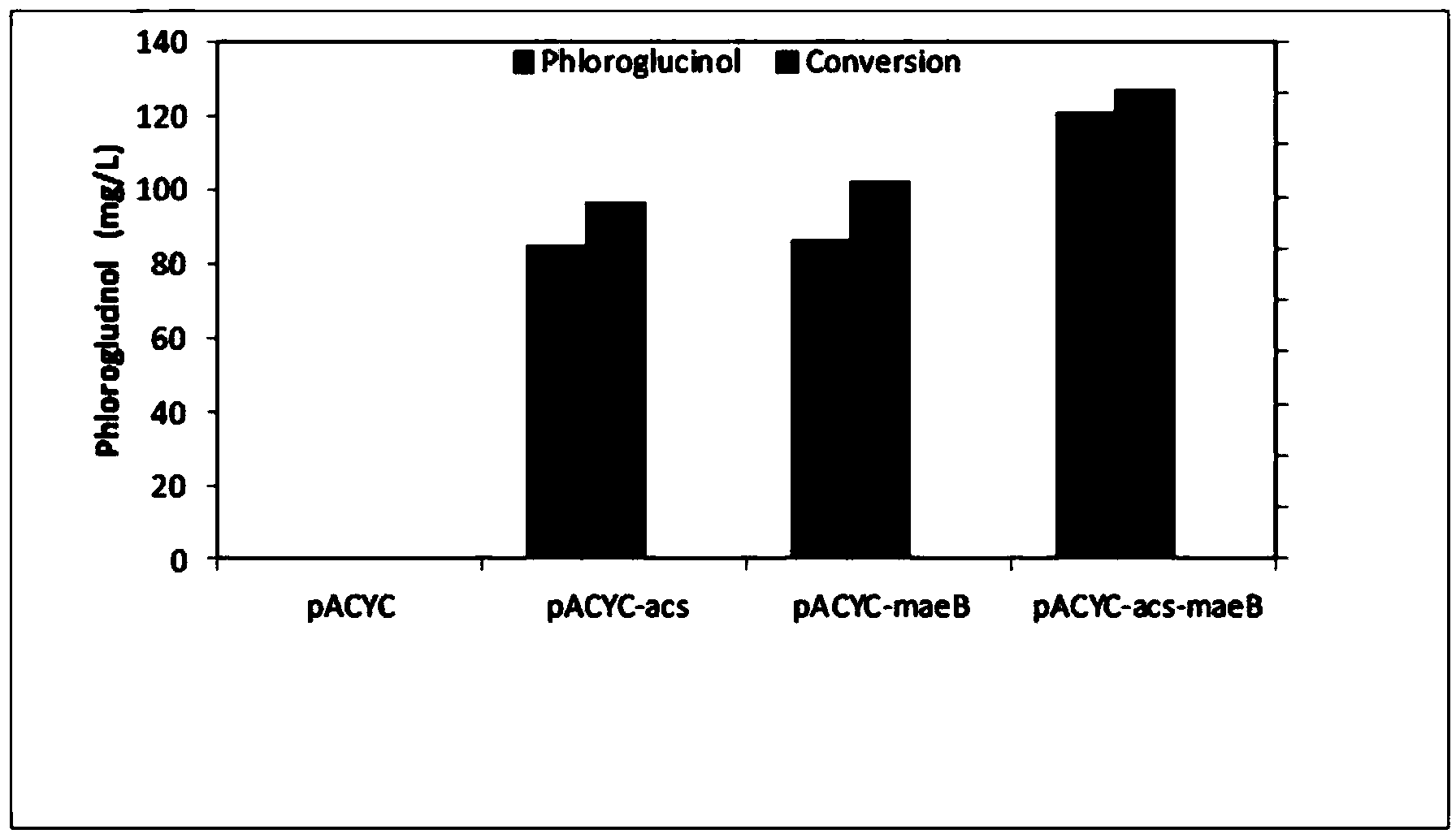Gene engineering strain capable of synthesizing phloroglucinol from acetic acid and construction method and application thereof
A technology of genetic engineering bacteria and phloroglucinol, applied in the field of genetic engineering, can solve the problem of high cost of phloroglucinol
- Summary
- Abstract
- Description
- Claims
- Application Information
AI Technical Summary
Problems solved by technology
Method used
Image
Examples
Embodiment 1
[0045]Acetyl-CoA synthetase gene acs, malic enzyme gene maeB co-expression vector construction, the specific process is as follows: oligonucleotide 5'-CCG GGA TCC ATG AGC CAA ATT CAC AAA CAC-3' and 5'-TTG GAA TTC TTA CGA TGG CAT CGC GA-3' as a primer, using Escherichia coli genomic DNA as a template, using the polymerase chain reaction (PCR) method to amplify the acetyl-CoA synthetase gene acs, and at the 5' end and 3' Respectively introduce BamHI and EcoRI restriction sites, and then clone the gene into the pACYCDuet-1 vector using the above restriction sites to obtain the recombinant plasmid pACYC-acs ( figure 1 ); using oligonucleotides 5'-CCG AGA TCT ATG GAT GAC CAG TTA AAA CAA A-3' and 5'-TTG GGT ACC TTA CAG CGG TTG GGT TTG-3' as primers and E. coli genomic DNA as template , the malic enzyme maeB was amplified by polymerase chain reaction (PCR), and BglII and KpnI restriction sites were introduced at the 5' end and 3' end respectively, and then the gene was cloned into O...
Embodiment 2
[0047] Preparation of engineering Escherichia coli strain BL21(DE3) / pACYC-acs-maeB / PET-pglD-marA for synthesizing phloroglucinol, and using the strain to ferment and transform acetic acid into phloroglucinol, the specific process is as follows:
[0048] The recombinant plasmid pACYC-acs-maeB constructed in Example 1 and the recombinant plasmid PET-pglD-marA (Yujin Cao, et al. Appl Microbiol Biotechnol (2011) 91: 1545–1552), 5 μl of the recombinant plasmid was transformed into Escherichia coli BL21 (DE3) competent cells by the heat shock transformation method, and then 50 μl of the transformed bacterial solution was applied to a medium containing 34 μg·mL -1 Chloramphenicol and 50 μg·mL -1 Positive clones were screened on the LB plate of kanamycin, and the grown colonies were recombinant E. coli strains co-expressing the acetyl-CoA synthetase gene and the malic enzyme gene. Pick a single colony of recombinant Escherichia coli that has been constructed, inoculate it into LB liq...
Embodiment 3
[0050] Use the constructed bacterial strain BL21(DE3) / pACYC-acs-maeB / PET-pglD-marA to ferment and generate phloroglucinol, the steps are as follows: inoculate the cultured fermented seeds into a 2L fermenter container at a volume ratio of 5%. medium in a 5 L fermenter. The culture temperature was 37°C, adjusted to 32°C before induction, and the dissolved oxygen was controlled at 50%. When OD 600 When it is about 1.0, add the inducer IPTG to the final concentration of 0.5mmol L -1 . During the fermentation process, ammonia water was fed automatically, sulfuric acid was used to control the pH at 7.0, 3M acetic acid was fed at a rate of 1% as feeding material, and OD, acetic acid and phloroglucinol were measured by sampling every 3 hours. After 48 hours of fermentation, the sample was centrifuged to separate the cells and supernatant, and liquid chromatography was used to detect the content of acetic acid and phloroglucinol in the supernatant of the fermentation broth, and the...
PUM
 Login to View More
Login to View More Abstract
Description
Claims
Application Information
 Login to View More
Login to View More - R&D
- Intellectual Property
- Life Sciences
- Materials
- Tech Scout
- Unparalleled Data Quality
- Higher Quality Content
- 60% Fewer Hallucinations
Browse by: Latest US Patents, China's latest patents, Technical Efficacy Thesaurus, Application Domain, Technology Topic, Popular Technical Reports.
© 2025 PatSnap. All rights reserved.Legal|Privacy policy|Modern Slavery Act Transparency Statement|Sitemap|About US| Contact US: help@patsnap.com



